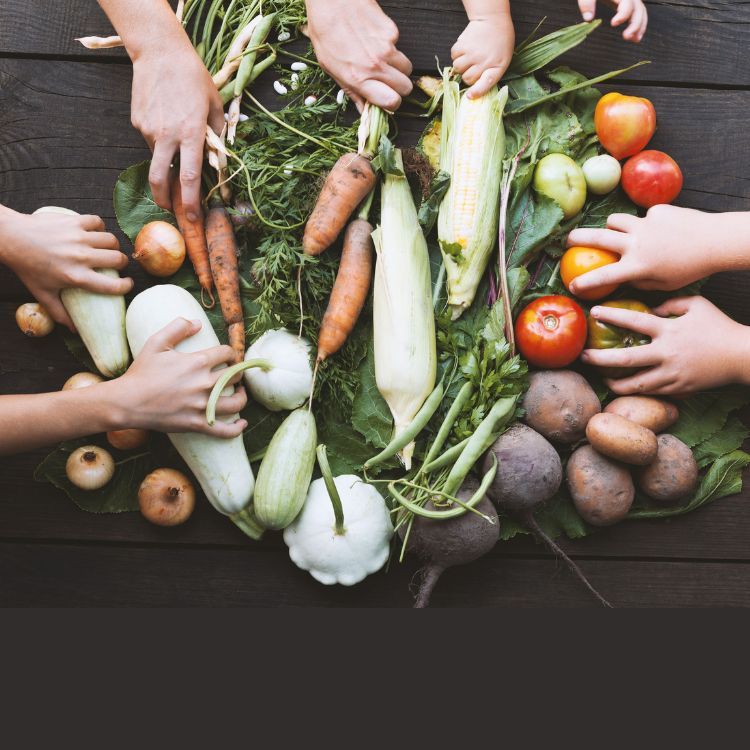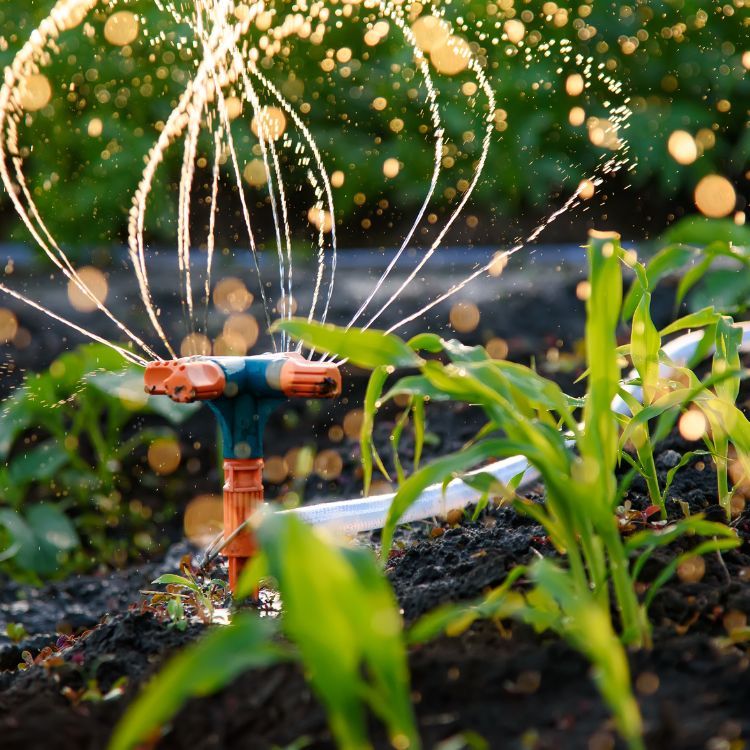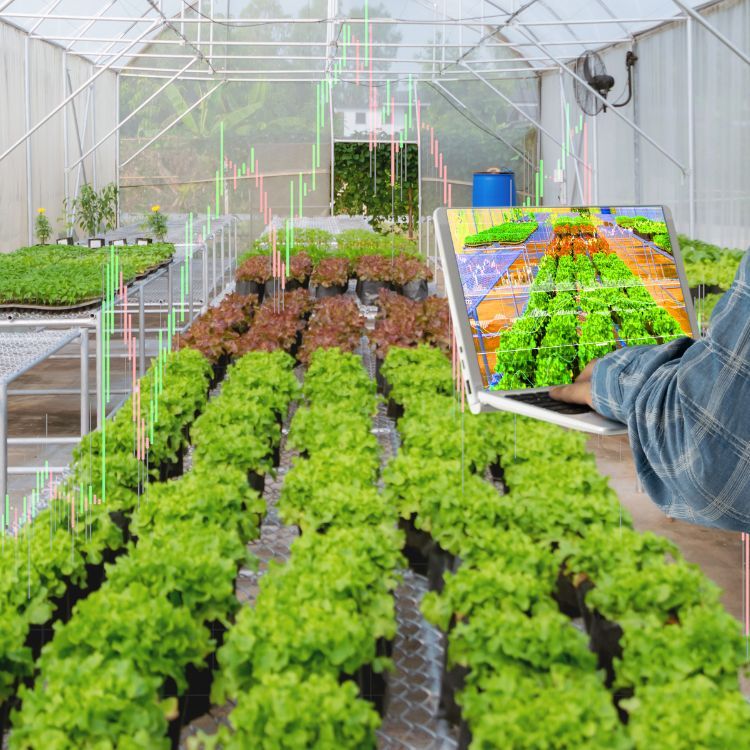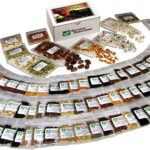
Key Takeaways
Urban survival gardening transforms unused spaces into lush, productive areas, providing fresh produce and enhancing community bonds.
These gardens can significantly reduce grocery bills and provide educational opportunities for all ages.
Green spaces in urban areas help combat the heat island effect, improving overall city temperatures and air quality.
Starting an urban garden requires choosing the right location, selecting suitable plants, and making the most of available space.
By using innovative gardening techniques, even the smallest spaces can become a flourishing garden contributing to sustainability.
Reap the Rewards: Urban Survival Gardening’s Social and Environmental Boon
Imagine turning that empty rooftop or barren lot down the street into a vibrant green space bursting with tomatoes, peppers, and herbs. That’s urban gardening, and it’s not just about beautifying the cityscape—it’s about reclaiming the concrete jungle and creating a sustainable future right where we live. Besides that, it fosters a sense of community, provides access to nutritious food, and brings about a myriad of environmental benefits.
Building Community Connections Through Green Spaces
There’s something magical about gardens—they become a hub for connection. In the heart of the city, gardens become more than just plots of land; they are the common ground where neighbors meet, hands in the dirt, sharing stories and seedlings. They are powerful tools for building community resilience, encouraging cooperation, and bridging diverse groups.
Elevating Urban Health with Homegrown Harvests
When you grow your own food, you know exactly what’s on your plate. This is crucial because, let’s face it, we could all use more greens and less processed food in our diets. Urban gardens provide a source of fresh, organic produce that’s as local as it gets—just a few steps from your door. And the act of gardening itself? It’s a stress-reliever and a form of exercise that can improve overall well-being.
Join the Green Revolution: Starting Your Urban Garden
Find a sunny spot: Plants need light to thrive, so choose an area that receives plenty of sunlight.
Test the soil: Ensure the soil is safe for growing food by testing for contaminants, especially in urban areas.
Start small: Begin with a few easy-to-grow plants to boost your confidence and gardening skills.
Starting an urban garden is an exciting journey into sustainability and self-sufficiency. It’s a concrete step (no pun intended) toward taking control of your food source and reconnecting with nature. And the best part? You don’t need acres of land or a green thumb to begin.
Choosing the Perfect Spot for Your Urban Oasis
Look around your living space. Do you have a balcony that gets a good amount of sunlight? Maybe there’s a shared rooftop or a community space that’s underutilized. These are perfect places to start your urban garden. The key is to find a space that receives at least six hours of sunlight a day and has easy access to water. Remember, the right location is the first step to a thriving garden.
Picking Plants That Thrive in City Environments
Not all plants are created equal when it comes to urban environments. You’ll want to choose varieties that can handle the unique challenges of city living, like fluctuating temperatures and limited space. Herbs like basil and mint, vegetables like lettuce and tomatoes, and fruits like strawberries are all excellent choices for an urban garden.
Moreover, consider the local climate and the amount of care each type of plant will need. If you’re a beginner, it’s wise to start with plants that are known for being hardy and low-maintenance.
Maximizing Space with Vertical and Container Gardening
Space is often at a premium in urban areas, but that doesn’t mean you can’t have a lush garden. Vertical gardening is a game-changer, allowing you to grow upwards instead of outwards. Think hanging planters, trellises for climbing plants, and even wall-mounted growing systems. Container gardening is another space-savvy option, with pots and planters that can be arranged on balconies, patios, and windowsills.
These methods not only save space but also add an aesthetic element to your urban dwelling. Plus, they make gardening accessible for those with limited mobility, since there’s less bending and kneeling involved.
Urban areas are notorious for their “heat island” effect, where buildings and concrete absorb and re-emit the sun’s heat more than natural landscapes, leading to higher temperatures. However, urban gardens can help reverse this effect. By replacing heat-trapping surfaces with plants, gardens help to cool the surrounding area, creating a more pleasant and healthful environment.
Combating Urban Heat Islands with Lush Landscapes
Green spaces in urban settings do more than just beautify—they play a crucial role in cooling down our cities. Plants absorb less heat during the day and release it more slowly in the evening, which can significantly lower temperatures. This is especially important during summer months when urban heat islands can be up to 22°F hotter than their greener counterparts. By integrating more urban gardens into city planning, we can create a cooler, more sustainable environment for everyone.
Sowing Seeds for Sustainability: Waste Reduction and Composting
Urban gardens are not just about growing food; they’re about growing sustainably. One of the most impactful practices in urban gardening is composting. By turning organic waste like food scraps and yard trimmings into rich soil, we can reduce the amount of waste sent to landfills and provide our gardens with a nutrient-rich supplement that helps plants thrive. Composting is a simple yet powerful way to contribute to a circular economy right in your backyard.
Nurturing Nature and Wallets: Economic Impacts
Urban gardening goes beyond environmental benefits; it’s also a savvy economic move. By growing your own produce, you can save significantly on grocery bills. Moreover, community gardens can stimulate local economies by providing fresh produce to local markets and restaurants.
Growing your own food can cut grocery costs and ensure access to fresh, healthy produce.
Community gardens can serve as educational spaces, teaching valuable skills that translate into job opportunities.
Urban agriculture can foster entrepreneurship, from selling produce to creating garden-based products.
But the benefits don’t stop at individual savings. Community gardens can become vibrant social enterprises, offering job training and employment opportunities in urban farming, marketing, and more.
Trimming Grocery Bills with Fresh, Homegrown Produce
Imagine cutting your food budget while eating healthier. That’s what urban gardening can offer. With some seeds, soil, and a little bit of time, balconies and rooftops can be transformed into a source of fresh veggies and herbs. This not only reduces the need for store-bought produce, which can be expensive and less fresh, but also provides the unbeatable taste of homegrown food.
Creating Local Jobs and Training Opportunities
Urban gardens can be more than just a personal hobby; they can be a source of community development. By establishing more urban gardens, cities can create green jobs in areas such as garden planning, maintenance, education, and produce sales. These jobs not only provide income but also empower individuals with valuable skills in sustainability and agriculture.
Gardening Against the Concrete: Overcoming Urban Challenges

“Urban gardening is an act of resilience. It’s about reclaiming spaces, reimagining possibilities, and reconnecting communities. It’s a testament to the fact that even in the most concrete-bound spaces, nature can not only survive but thrive.” – A Local Urban Gardener
Urban gardening is a testament to human ingenuity and adaptability. Gardeners in cities face unique challenges, from limited space to soil contamination. However, with the right strategies, such as harnessing solar power for sustainable practices, these obstacles can be overcome, turning potential problems into lush solutions.
Resourceful Watering Techniques for Dry Urban Climates
In urban areas where water might be scarce or expensive, gardeners get creative. Drip irrigation, rainwater harvesting, and choosing drought-resistant plants are just a few techniques that can help conserve water. These methods ensure that plants get the moisture they need without wasting this precious resource.
Battling Space Constraints with Innovative Design
Lack of space is a common issue in urban environments, but it’s not an insurmountable one. With the rise of vertical gardens and rooftop farming, urban dwellers are finding ways to grow upwards. Innovations like stackable planters and wall-mounted growing systems are making it possible to have a thriving garden in even the smallest of spaces.
Flourish with the City: Gardening in Limited Spaces
Urban gardening isn’t limited by the square footage of soil available. It’s about making the most of what you have. Balconies, window sills, and even walls can become verdant spaces with a little creativity and the right approach.
Going Up: The Wonders of Vertical Gardening
Vertical gardening is a space-saving miracle. By using trellises, wall planters, and hanging baskets, you can grow a variety of plants without taking up valuable ground space. It’s perfect for city dwellers who want to grow their own food but don’t have a backyard.
Whether you’re working with a few pots on a windowsill or a full-fledged rooftop farm, urban gardening is a rewarding and impactful pursuit. Not only does it provide personal benefits like fresh produce and a sense of accomplishment, but it also contributes to the larger goals of sustainability, community building, and economic resilience.
Ready to dig in and make a difference? Urban gardening is an accessible and fulfilling way to connect with nature and your community. Get started today and watch as your city space transforms into a green haven. Visit Survival Essentials to find everything you need to begin your urban gardening adventure.
The Future Blooms Bright: Trends and Technology in Urban Gardening

The green thumbs of today are reaching into the future, leveraging technology to make urban gardening more efficient, productive, and accessible. Advances in technology are not just changing the way we interact with the world; they’re revolutionizing the way we grow our food in urban settings.
New Horizons: Digital Tools for Urban Green Thumbs
With the touch of a button or the swipe of a screen, urban gardeners can now monitor plant health, track growth patterns, and manage resources. Mobile apps offer planting calendars, care reminders, and even plant identification to help both novice and experienced gardeners. Besides that, online communities are buzzing with tips, advice, and support, making urban gardening an increasingly connected endeavor.
Moreover, digital platforms have made it easier than ever to source seeds, tools, and other gardening essentials. Websites like Survival Essentials offer a wide range of products to help urban gardeners get started on their green journey.
The Rise of Smart Gardening: Sensors and IoT for Urban Agriculture
Imagine sensors that tell you when your plants need water or nutrients. The Internet of Things (IoT) is making this a reality, with smart gardening systems that can monitor and automate many aspects of garden maintenance. These systems can optimize water usage, detect pests, and even suggest the best crops to plant based on local climate data.
Smart gardening takes the guesswork out of urban agriculture, making it more accessible and less intimidating for those new to the practice. It’s a perfect blend of nature and technology, where data-driven insights help cultivate thriving gardens in the heart of the city.
FAQ
Urban gardening might seem complex at first, but it’s an incredibly rewarding activity that anyone can take part in. Here are some frequently asked questions to help clear the path for your urban gardening adventure.
What Are the Most Space-Efficient Plants for Urban Gardening?
When space is at a premium, you want to choose plants that pack a punch. Herbs like basil, chives, and cilantro are great for small pots and window boxes. Leafy greens such as spinach, kale, and lettuce can be harvested repeatedly and don’t require much room. And don’t forget about vertical climbers like beans and cucumbers, which can be trained to grow upwards on trellises or fences.
How Can I Start an Urban Garden with No Experience?
Don’t let a lack of experience hold you back from starting your urban garden. Begin with research—learn about the plants suitable for your area and the kind of care they need. Start small with a few pots or a mini herb garden. Remember, gardening is a learning process, and every mistake is an opportunity to grow.
Most importantly, tap into the wealth of resources available online. Websites like Survival Essentials offer not just the tools and seeds but also the guidance you need to kickstart your gardening journey.
What Are the Best Practices for Sustainable Urban Gardening?
Sustainable urban gardening is all about minimizing your environmental impact while maximizing your garden’s productivity. Use organic seeds, practice composting, and collect rainwater for irrigation. Choose local plant varieties when possible, as they are better adapted to the local climate and pests. And always look for ways to reuse and recycle materials in your garden setup.
Can Urban Gardens Really Make a Difference in the Environment?
Yes, urban gardens can have a profound impact on the environment. They help reduce the urban heat island effect, improve air quality, and support biodiversity. Even a small garden contributes to these benefits, so every plant counts.
Furthermore, urban gardens can reduce the carbon footprint associated with transporting food by providing a local source of fresh produce.
How Do Urban Gardens Contribute to Community Building?
Urban gardens are more than just places to grow food; they are vibrant community hubs where people come together. They provide a space for education, socialization, and collaboration. Community gardens, in particular, foster a sense of ownership and shared responsibility, strengthening neighborhood ties and promoting inclusivity.
By participating in urban gardening, you’re not just planting seeds in the soil; you’re planting seeds of community and connection.







Leave a Reply